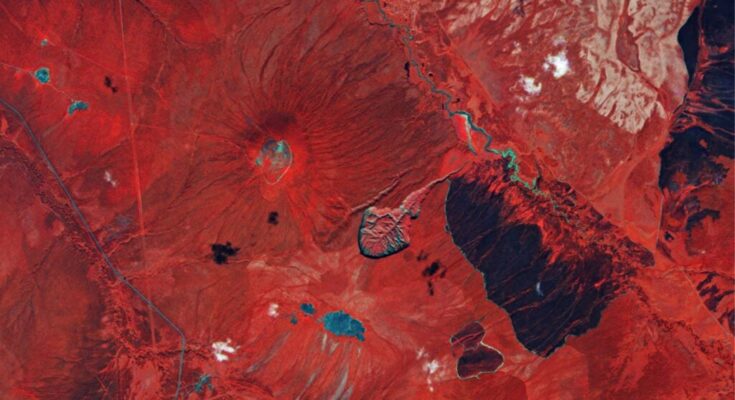
In the cold and unhospitable environment of Siberia, a giant hole is breaking open the land. This hole has the shape of a stingray, and it is viewable from space. The story of this “Gateway to Hell” in Siberia dates back to the Cold War, as shown by declassified imagery from the 1960s, when it was barely visible.
Now, the gateway to hell has steep cliffs that are clearly visible from space. This is because, in a period of almost 30 years, the hole has grown to an unprecedented degree. Between 1991 and 2018, the hole tripled its size according to the US Geological Survey.
The Gateway to Hell in Siberia, also referred to as the Batagay Crater or Batagaika is the physical representation of a geological issue that affects the entire planet.
So why is there a Gateway to Hell in Siberia?
In essence, this massive crater in Siberia is a direct consequence of the Arctic heating up faster than the rest of the Earth. The direct consequence of this process is that permafrost is quickly thawing, resulting in “craters” like the one in Siberia.
However, Siberia’s Gateway to Hell is actually not a crater at all. It is the world’s largest “retrogressive thaw slump.”
Now, it doesn’t take a geologist to see that this is not the best name to describe such an interesting phenomenon, but it is accurate, given that it is a pit that forms when permafrost thaw causes the ground to cave in. This then creates a landslide as the earth as its edges slumps into the pit.
This is not an uncommon phenomenon either, given that there are thousands of thaw slumps across the Arctic. What sets Siberia’s Gateway to Hell apart is its size, which has earned it the title of mega slump.
The mega slump in Siberia could be oddly useful to understand where our planet is headed in the future
Permafrost is a strange but fascinating substance. As permafrost thaws, all the dead organisms frozen in it for millennia begin to decompose and release carbon dioxide and methane into the atmosphere.
Essentially, permafrost has blocked these emissions from being released into the atmosphere. This is even more significant considering that permafrost covers 15 percent of the land in the Northern Hemisphere, which contains twice as much carbon as the atmosphere.
If permafrost continues to defrost, then it could emit as much carbon dioxide as a large industrial country by 2100.
This has the potential to further aggravate the climate crisis, but not much is really known about the actual process. However, studying sites such as the Gateway to Hell in Siberia can shed much light on an otherwise unknown phenomenon.
For instance, researchers have calculated that the Gateway to Hell releases somewhere between 4,000 to 5,000 tons of carbon every year. This is close to the energy usage of 1,700 homes in the United States.



